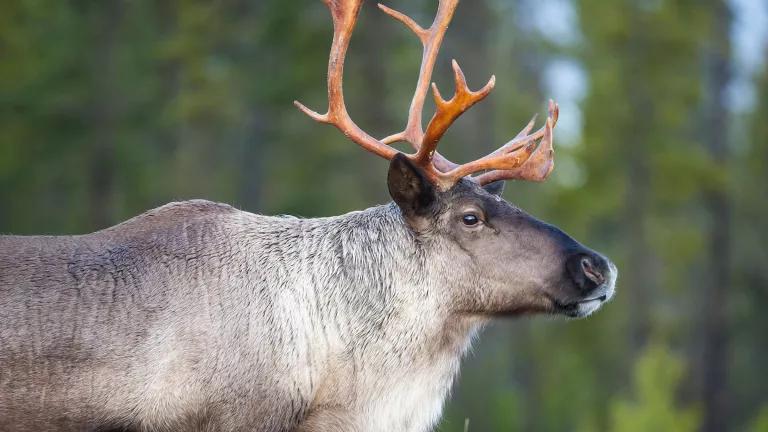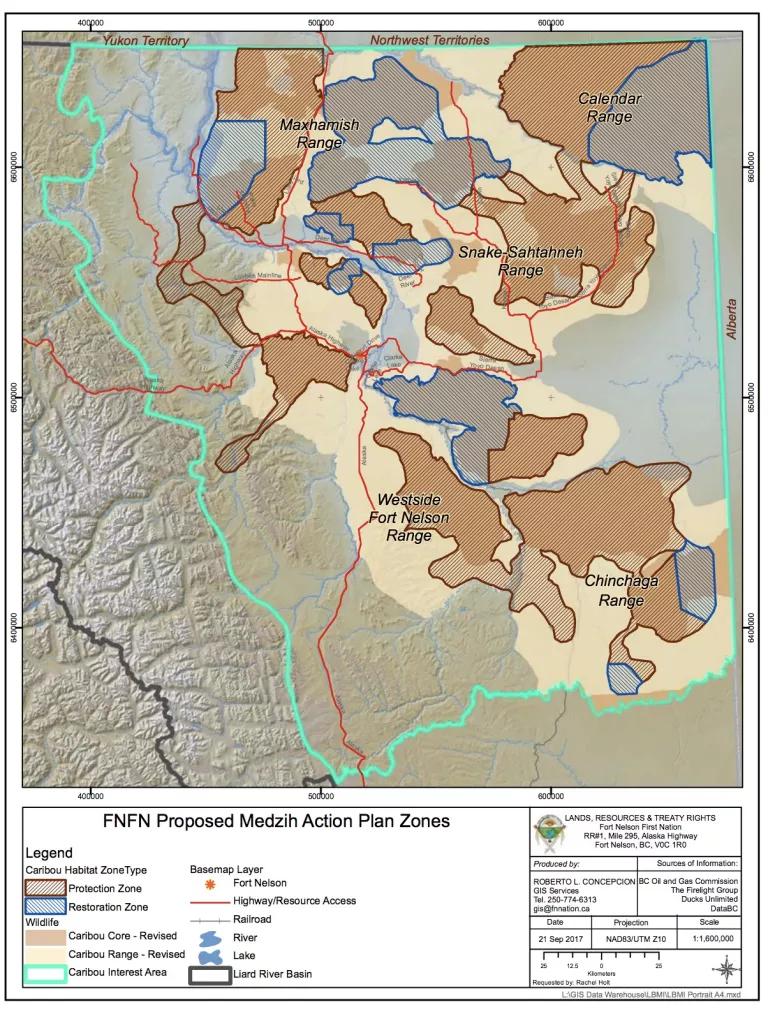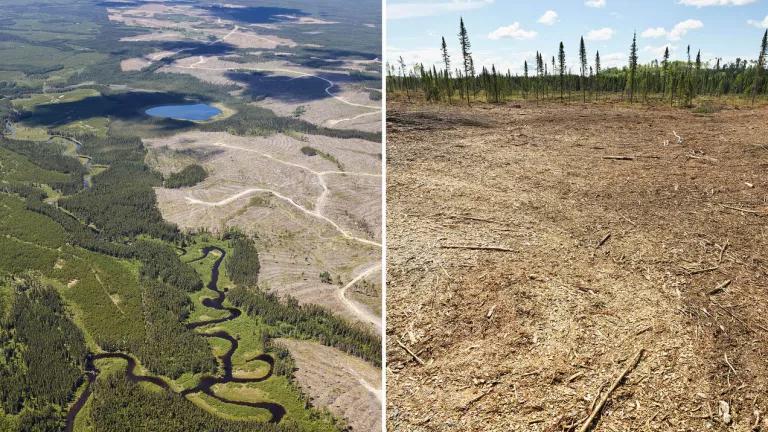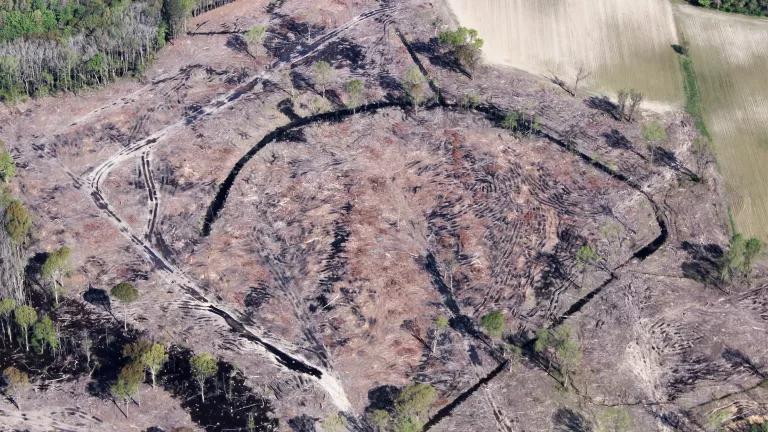Canadian Government Report: Caribou Habitat Unprotected

A greatly anticipated Canadian federal government report released today paints a dire picture for the future of boreal caribou, showing that provinces and territories have almost entirely failed to protect the threatened species. Even in the face of abundant evidence of caribou decline, this report shows, provinces have fiddled as Rome burned, allowing industrial development without consideration of its sustainability or impact on threatened species. This report is a serious blow to the credibility of provinces and territories, especially as the international marketplace is calling on Canada’s governments to protect boreal caribou. Without swift and meaningful action, Canada faces not only the loss of one of its most iconic species, but also its international reputation.
The report itself is a welcome development, and demonstrates an important milestone in the Species at Risk Act (SARA) process. This marks the first time the Canadian government has embraced its responsibility under SARA to release a report on the state of protection for an at-risk species. Under Section 63 of SARA, the federal government is required to provide an update every 180 days on whether critical habitat for an at-risk species is protected. After years of litigation and lobbying from environmental groups, Environment and Climate Change Canada (ECCC) has finally shared this key information with the public.
While the report’s release is a positive step, its findings are extremely troubling. The federal government concluded in the report that, across Canada, provinces and territories have failed to protect almost all of the boreal caribou’s critical habitat.
Provincial Inaction in the Face of Caribou Decline
In the years leading up this report, provinces and territories have fully known that caribou are in trouble. Caribou were first listed as threatened federally in 2003, and both Western and Indigenous knowledge and science have left little doubt that without protection, the future of the species is bleak. The Canadian government’s own reports state that only 14 of Canada’s 51 boreal caribou herds are self-sustaining, and at current rates, 30 percent of caribou could disappear in the next 15 years. In October, the federal government released a boreal caribou recovery strategy Progress Report, which found that since the federal government first released its recovery strategy in 2012, caribou populations have continued to plummet.
Nevertheless, after missing the federal government’s October 2017 deadline for creating caribou protection plans, in 2018 many provinces doubled down on prioritizing industry at the expense of boreal caribou. The Government of Ontario, for example, extended the forestry industry’s exemption to its Endangered Species Act, further threatening caribou and halting recovery efforts. Quebec announced that it was not going to take action to recover the Val d’Or caribou herd, after years of allowing industrial development in its critical habitat. Alberta, meanwhile, stated that it would be suspending consideration of potential protected areas until the province could determine socio-economic impacts and that it needs more time to complete the range planning process.
Indigenous Leadership
Where provinces and territories are failing, Indigenous Peoples are leading the way to creating a sustainable future for boreal caribou. When every province shirked the October 2017 deadline for releasing caribou protection plans, Fort Nelson First Nation in British Columbia released its own Medzih (boreal caribou) Action Plan (MAP) for their territory. The MAP combined Indigenous and Western knowledge and science to create a plan that “recognize[s] the need to balance economic security with respect for our way of life, culture, and inherent connections to the lands, waters, and animals that sustain us.”
Fort Nelson First Nation is not alone. Across Canada, Indigenous Peoples are creating management plans that work to create a healthy future for their people and boreal caribou. The Waswanipi Cree, for example, have been asking Quebec for more than fifteen years to designate the Mishigamish as a protected area, which would safeguard some of the region’s most important caribou habitat and protect the Cree way of life from the devastating effects of logging. In Ontario, Indigenous Peoples have joined mayors, forest industry representatives, and environmental groups to develop a plan that encourages sustainable development while also protecting important caribou habitat.

Medzih Action Plan Proposed Protection and Restoration Zones
What Comes Next
Provinces’ failure to protect boreal caribou habitat threatens Canada’s global reputation. The international marketplace has asked Canada to ensure that its forest products are sustainably harvested and do not come at the expense of boreal caribou and Indigenous ways of life. At a recent meeting of the United Nations Permanent Forum on Indigenous Issues (UNPFII), numerous Indigenous leaders called on Canada to respect their rights to their land and resources. Canada is also facing a looming deadline under the Convention on Biological Diversity (CBD) for protecting 17 percent of its lands.
The new Section 63 report is an important step by the federal government, and should be the first of many. As required by law, the federal government should continue to release a report on boreal caribou protection every 180 days, and do the same for other at-risk species. The federal government should also further employ its toolkit under SARA, by implementing “safety net orders” that would protect key unprotected areas as provinces and territories work with Indigenous Peoples to create long-term plans. The federal government should also promote the development of Indigenous-led management and the integration of Indigenous knowledge and science into the range planning process.
Provinces and territories urgently need to take action to finally protect boreal caribou if the species is to have a chance at long-term survival. NRDC, along with six other environmental groups, have called on governments to stop further degradation in boreal caribou ranges that are already more than 35 percent disturbed and to immediately protect critical habitat in partnership with Indigenous Peoples, fully respecting their knowledge and rights.
This report needs to mark a turning point. Every day, more and more boreal caribou critical habitat is lost due to irresponsible, rampant industrial development. Lessons from the report could not be any clearer: Canada’s governments need to act now if boreal caribou are to be given a road to recovery—and Canada’s international reputation preserved. The world is watching.




